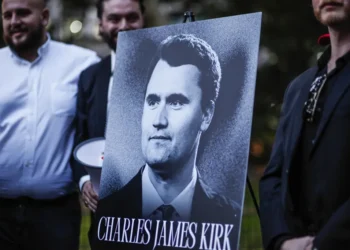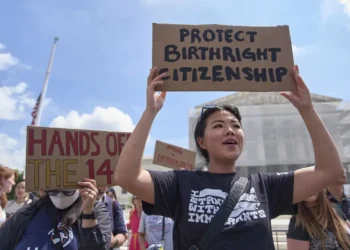Fact Check: No, the U.S. Doesn’t Subsidize Canada by $200 Billion a Year
Claim: President Donald Trump recently claimed the United States “subsidizes Canada to the tune of maybe $200 billion a year.”
Reality: That number doesn’t hold up to scrutiny — and calling it a “subsidy” misses the mark entirely.
What’s This About?
During a recent White House meeting with newly elected Canadian Prime Minister Mark Carney, President Trump revived a familiar talking point — that the U.S. is pouring money into Canada, allegedly in the form of military protection and trade imbalances.
“It’s hard to justify subsidizing Canada to the tune of maybe $200 billion a year,” Trump said. “We protect Canada militarily… But why are we subsidizing Canada $200 billion a year or whatever the number might be?”
So let’s unpack that. Does the U.S. actually give Canada anything close to $200 billion annually? Short answer: No. Not even close.
Where Did the Number Come From?
The White House says the $200 billion claim loosely stems from two things:
- The U.S. trade deficit with Canada
- U.S. military spending, particularly on NORAD (North American Aerospace Defense Command)
Let’s break these down.
The Trade Deficit ≠ Subsidy
According to U.S. government data:
- The 2024 trade deficit with Canada (goods and services combined) was about $35.7 billion.
- If you look only at goods, that number ranges higher — $63.3 billion to $70.6 billion.
- The White House estimate? Around $53.5 billion, which matches 2022 figures.
But here’s the issue: A trade deficit is not a subsidy.
“That’s never been the definition of a subsidy,” says Gary Hufbauer, a senior fellow at the Peterson Institute for International Economics. “A subsidy is a gift without compensation.”
Gian Maria Milesi-Ferretti of the Brookings Institution adds that trade deficits reflect different national demands and economic specializations — not handouts.
Military Spending: Not a One-Way Street
The second part of the claim revolves around defense spending.
In 2024:
- Canada spent $29.3 billion on defense (about 1.3% of GDP).
- The U.S., by comparison, spent a whopping $997 billion, or 3.4% of its GDP — well above the NATO-recommended 2% benchmark.
True, Canada falls short of NATO’s target, and yes, Trump has repeatedly called out allies for that. But does that shortfall mean the U.S. is “subsidizing” Canada?
Not exactly, says Mark Cancian of the Center for Strategic and International Studies:
“No, they don’t owe us that money, but they aren’t paying their fair share, and that’s a fair criticism.”
To put it into perspective:
- If Canada were to meet the 2% NATO guideline, it would need to spend around $44.8 billion — meaning it currently underspends by about $15.5 billion.
- Add that to the trade deficit, and you still only reach about $51 billion — a far cry from $200 billion.
Even using the highest goods-only deficit, the total doesn’t exceed $86 billion.
What About NORAD?
NORAD — the U.S.-Canada joint air defense initiative — often comes up in these discussions.
The U.S. does cover about 60% of NORAD costs, based on a 1985 cost-sharing agreement. But actual spending details aren’t public, making the full picture unclear.
Canada has committed significant NORAD investments:
- $4.9 billion USD over 6 years
- $27.7 billion USD over 20 years (on an accrual basis)
Defense economists Binyam Solomon and Ross Fetterly published a 2023 paper analyzing NORAD’s cost-sharing. Here’s what they found:
- The U.S. shoulders roughly 97.6% of North American defense costs but receives 64% of the benefits.
- Canada contributes about 2%, but still benefits from 36% of the security umbrella.
- Adjusting for geographical vulnerabilities flips that benefit distribution sharply in the U.S.’s favor.
In other words, the U.S. may spend more — but it’s also protecting itself.
“Even if the Canadians pulled out, we’d have to have something like [NORAD] in place,” Cancian notes. “So I would not consider that a subsidy at all. Canadians can make a fair argument that we owe them.”
Bottom Line
No, the U.S. does not subsidize Canada by $200 billion a year.
The number is based on a misunderstanding — or misrepresentation — of trade deficits and military cooperation.
Even using inflated estimates, you don’t get anywhere near $200 billion. More importantly, labeling trade deficits and NATO shortfalls as “subsidies” simply isn’t accurate.
Misinformation about international relationships can erode trust and mislead the public. That’s why fact-checking matters — especially when the numbers don’t add up.
This article was rewritten by JournosNews.com based on verified reporting from trusted sources. The content has been independently reviewed, fact-checked, and edited for accuracy, neutrality, tone, and global readability in accordance with Google News and AdSense standards.
All opinions, quotes, or statements from contributors, experts, or sourced organizations do not necessarily reflect the views of JournosNews.com. JournosNews.com maintains full editorial independence from any external funders, sponsors, or organizations.
Stay informed with JournosNews.com — your trusted source for verified global reporting and in-depth analysis. Follow us on Google News, BlueSky, and X for real-time updates.












